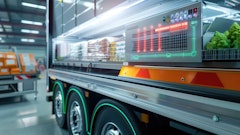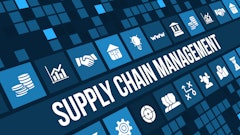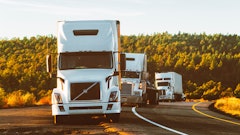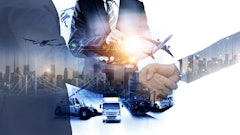
Food delivery has become a staple in today’s hectic lives offering access to a world of cuisine from the comfort of phone screens. But for those living in the suburbs, enjoying this convenience often comes with a price. Traditional delivery methods struggle with the challenges of suburban sprawl, leading to long wait times and increased costs, leaving the customer with a subpar experience and a cold meal that should have been delivered hours ago.
That’s where drone delivery enters the picture and shakes things up. This innovative solution has emerged as a game-changer, particularly in suburban settings. With its promise of speed, efficiency and sustainability, drone delivery is poised to revolutionize the way consumers access food and other goods.
Drones exhibit a remarkable product-market fit in suburban environments. Unlike urban areas where high-rise buildings present logistical challenges, suburban homes with backyards offer ideal landing zones. Many consumers express a preference for drone delivery over traditional methods, enjoying the convenience of receiving their orders directly at their doorstep without the need to interact with a delivery driver or other people in general.
Navigating suburban delivery challenges with drones
The suburban landscape, characterized by lower population and restaurant density, poses obstacles for traditional delivery services. Some of these challenges are the result of the lower population density and lower restaurant density, which means couriers have to drive longer distances for less deliveries, compared to big cities. The economics of operating in such areas become less favorable due to the reduced number of deliveries per hour. In contrast, drones can navigate these challenges with ease, optimizing flight paths and maximizing efficiency.
Success stories in suburban communities highlight the transformative potential of drone delivery. These areas now benefit from faster delivery times, broader food options from local restaurants, and an increasingly convenient on-demand experience. Upcoming innovations, like priority delivery services, aim to reduce the time between food preparation and delivery, potentially cutting wait times to under 10 minutes. This shift underscores the growing emphasis on speed and convenience in the food delivery industry.
Regulatory support and technological advancements propel drone adoption
The current regulatory environment also favors drone operations in suburban areas. The lower population density associated with these regions translates to reduced regulatory difficulties. This, combined with advancements in drone technology and a supportive regulatory framework, has created a conducive environment for the growth of drone delivery services. The rules around flying drones are becoming more friendly to businesses. As technology improves and governments create clearer and more relaxed guidelines, drone delivery is taking off.
The drone delivery industry is rapidly evolving, with a strong focus on speed, safety, and customer satisfaction. Drones equipped with smart technology and efficient flight paths are driving this transformation. Effective fleet management, optimized routes, and partnerships with restaurants are proving crucial in achieving positive unit economics. Advanced technology and data analytics play a key role in streamlining operations and reducing costs, positioning drone delivery as a sustainable and scalable solution for the future.
Operational efficiency and sustainability in drone delivery
One of the key advantages of drone delivery lies in its operational efficiency. Drones can fly where cars can't. Traditional delivery services rely on human drivers, but a single drone operator can manage multiple drones simultaneously, increasing delivery capacity and reducing labor costs. For instance, a single operator can oversee six drones, each capable of making up to five deliveries per hour, resulting in a total of 30 deliveries per hour. This compares favorably to the typical three deliveries per hour achieved by a human driver, especially in suburban settings, and on a bad traffic day, that number could be even lower.
Drone delivery is a significantly more eco-friendly alternative to traditional methods, reducing carbon emissions by using electric-powered drones instead of gas-fueled cars. Drones fly direct and efficient routes, avoiding traffic and minimizing energy consumption.
Collaborations with merchant partners and quick-service restaurants (QSRs) are essential to the success and growth of drone delivery services. By integrating into existing restaurant operations, drone delivery offers an efficient and scalable solution that enhances service capabilities. These partnerships allow restaurants to extend their delivery range, reduce wait times, and improve customer satisfaction. With the help of proprietary technology that streamlines order management, drone delivery becomes a vital component in handling high-volume orders while maintaining operational efficiency.
The aerial environment offers a unique advantage for autonomous operations. the skies provide a relatively unobstructed space for drones to navigate unlike congested roadways. This has accelerated the development of advanced autonomous flight systems, surpassing the progress made in autonomous ground vehicles.
Recent regulatory advancements have also played a crucial role in driving the growth of drone delivery. The Federal Aviation Administration (FAA) has made significant strides in easing restrictions, including approvals for drone operations without visual observers, which is a game changer. These developments, coupled with advancements in detect-and-avoid and unmanned traffic management systems, have created a more favorable drone operating environment.
As drone technology continues to develop and regulatory frameworks evolve, anticipate an even brighter future for drone delivery. This transformative technology has the potential to reshape the logistics industry, providing faster, more efficient, and sustainable solutions for a wide range of goods and services.

























